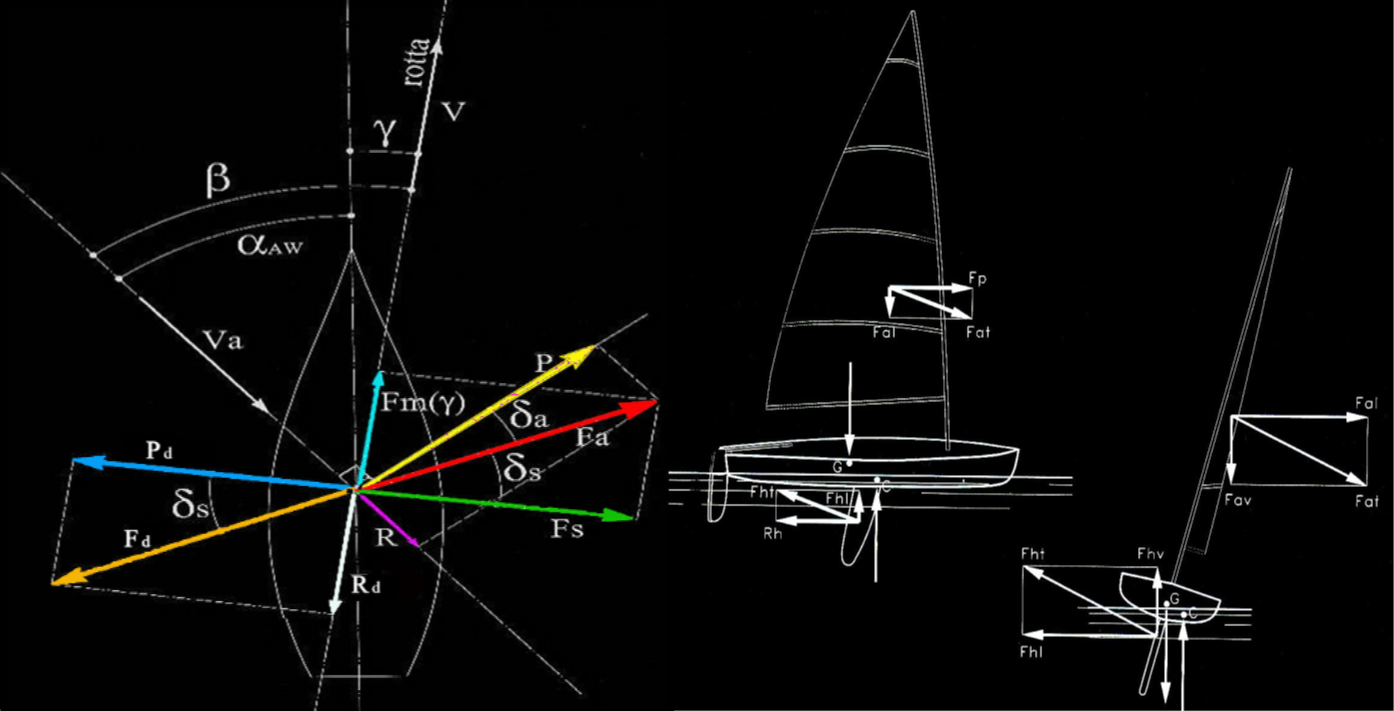
The Physics Behind a Sailing Boat
How does a sailing boat go upwind by aerodynamic and hydradynamic force
by Yixin Qi
Sun Aug 29 2021
#Sailing Knowledge
A lot of students wonder how a sailing boat can go upwind/ go against the wind. Here is an easy explanation: The sail of a sailing boat is like the wing of an airplane. When winds pass through the sail, they create an aerodynamic force that is perpendicular to the sail (like the force lift the airplane wings up). If we decompose this force, we can actually find that this force pushes the boat to go forward/ go against the wind, as well as push the boat to the sideway. At the same time, when the water passing through the keel under the boat, it creates a hydrodynamic force that has a direction opposite to the aerodynamic force. So it prevents the boat goes sideways, but at the same time create also a resistance. When such resistance is smaller than the forward motion created by the sail aerodynamic force, the boat accelerates! When these two forces have the same power, they make the boat sail in balance, However, they create a moment that makes the boat heel/incline to one side. Such heeling is offset by the righting moment generated by the hull (we will talk about it in another article). A more detailed explanation is below: Before considering the forces in their three-dimensional distribution we observe the balance between aerodynamic and hydrodynamic forces acting horizontally as if they were concentrated in the same place. All of these forces have to be balanced if the boat moves at a constant speed. The sail invested by the apparent wind Va it generates the aerodynamic force Fa (red vector). This force can be decomposed in the reference system of the wind. Performing this decomposition is obtained a force orthogonal to the wind direction, the lift P (vector yellow), and a force parallel to the wind direction, the resistance R (vector violet). We call with δa the angle between the aerodynamic force Fa and the lift P. The aerodynamic force Fa can be decomposed, as well as in the reference wind (as seen before), also in the reference of the hull. By executing this new decomposition we get two new forces: the first force is a force in the direction of the route, that is the direction in which the boat sails, and is, therefore, a driving force that will call Fm (vector blue). The second force is a force perpendicular to the route, which is called the leeway force Fs (green vector). The latter is the cause of the fact that the boat does not move in the direction of its longitudinal axis, but holds a route that respect to said axis is inclined by an angle γ (leeway angel). The fact that the route followed by the hull is at a certain angle with its longitudinal axis (the angle of direction g) means that the keel is invested by the water with a certain angle of incidence. As we mentioned when we spoke of the lifting profiles, when the keel is invested by the fluid at an angle it starts producing a hydrodynamic force Fd (vector gold). As before we can break down the hydrodynamic force Fd in the reference system of the route. Then we get a force perpendicular to the direction of the route that we call Lift hydrodynamic Pd (vector dark blue) and a force parallel to the direction of the route that we call hydrodynamic resistance Rd (vector white). ------------------------------------------- Does that make more sense to you? Do you like this article, if yes let us know so we will be happy to share more knowledge about the physics behind the sailing boat! If not, I will write something else next time :) Yixin